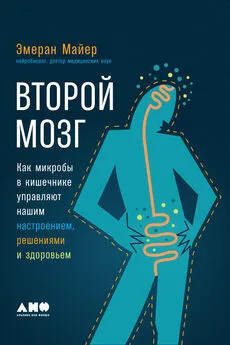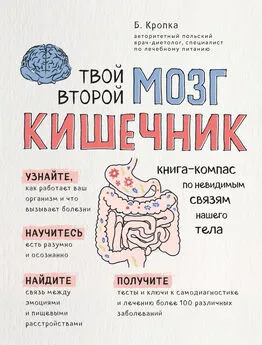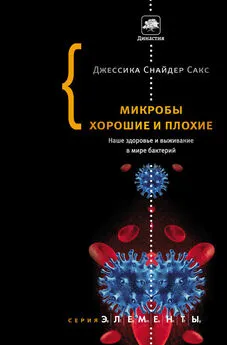Эмеран Майер - Второй мозг: Как микробы в кишечнике управляют нашим настроением, решениями и здоровьем
- Название:Второй мозг: Как микробы в кишечнике управляют нашим настроением, решениями и здоровьем
- Автор:
- Жанр:
- Издательство:Альпина нон-фикшн
- Год:2018
- Город:Москва
- ISBN:978-5-9614-5266-2
- Рейтинг:
- Избранное:Добавить в избранное
-
Отзывы:
-
Ваша оценка:
Эмеран Майер - Второй мозг: Как микробы в кишечнике управляют нашим настроением, решениями и здоровьем краткое содержание
Доктор медицинских наук Эмеран Майер представляет в своей книге революционный взгляд на устройство человеческого организма и на то, какую роль в нем играет взаимодействие между головным мозгом и желудочно-кишечным трактом. Триллионы микроорганизмов, обитающих в кишечнике, находятся в постоянной связи друг с другом и с головным мозгом, и именно от нее во многом зависит и наше общее состояние, и даже принятие жизненных решений.
Кроме того, сбои в этом взаимодействии ведут к развитию депрессии, аутизма, деменции и болезни Паркинсона.
Автор убедительно показывает, что здоровье организма и борьба с серьезными хроническими заболеваниями невозможны без налаживания правильного диалога со своими микробами.
Второй мозг: Как микробы в кишечнике управляют нашим настроением, решениями и здоровьем - читать онлайн бесплатно ознакомительный отрывок
Интервал:
Закладка:
Список рекомендуемой литературы
Aagaard, Kjersti, Jun Ma, Kathleen M. Antony, Radhika Ganu, Joseph Petrosino, and James Versalovic. “The Placenta Harbors a Unique Microbiome.” Science Translational Medicine 6 (2014): 237ra65.
Abell, Thomas L., Kathleen A. Adams, Richard. G. Boles, Athos Bousvaros, S. K. F. Chong, David R. Fleisher, William L. Hasler, et al. “Cyclic Vomiting Syndrome in Adults.” Neurogastroenterology and Motility 20 (2008): 269–84.
Aksenov, Pavel. “Stanislav Petrovic: The Man Who May Have Saved the World.” BBC News, September 26, 2013. http://www.bbc.com/news/world-europe-24280831.
Albenberg, Lindsey G., and Gary D. Wu. “Diet and the Intestinal Microbiome: Associations, Functions, and Implications for Health and Disease.” Gastroenterology 146 (2014): 1564–72.
Alcock, Joe, Carlo C. Maley, and C. Athena Aktipis. “Is Eating Behavior Manipulated by the Gastrointestinal Microbiota? Evolutionary Pressures and Potential Mechanisms.” Bioessays 36 (2014): 940–49.
Allman, John M., Karli K. Watson, Nicole A. Tetreault, and Atiya Y. Hakeem. “Intuition and Autism: A Possible Role for Von Economo Neurons.” Trends in Cognitive Neurosciences 9 (2005): 367–73.
Almy, Thomas P., and Maurice Tulin. “Alterations in Colonic Function in Man Under Stress. I. Experimental Production of Changes Simulating the Irritable Colon.” Gastroenterology 8 (1947): 616–26.
Aziz, Imran, Marios Hadjivassiliou, and David S. Sanders. “The Spectrum of Noncoeliac Gluten Sensitivity.” Nature Reviews Gastroenterology and Hepatology 12 (2015): 516–26.
Baeckhed, Fredrik, Josefine Roswall, Yangqing Peng, Qiang Feng, Huijue Jia, Petia Kovatcheva-Datchary, Yin Li, et al. “Dynamics and Stabilization of the Human Gut Microbiome During the First Year of Life.” Cell Host and Microbe 17 (2015): 690–703.
Bailey, Michael T., Gabriele R. Lubach, and Christopher L. Coe. “Prenatal Stress Alters Bacterial Colonization of the Gut in Infant Monkeys.” Journal of Pediatric Gastroenterology and Nutrition 38 (2004): 414–21.
Bailey, Michael T., Scot E. Dowd, Jeffrey D. Galley, Amy R. Hufnagle, Rebecca G. Allen, and Mark Lyte. “Exposure to a Social Stressor Alters the Structure of the Intestinal Microbiota: Implications for Stressor-Induced Immunomodulation.” Brain, Behavior and Immunity 25 (2011): 397–407.
Bercik, Premysl, Emmanuel Denou, Josh Collins, Wendy Jackson, Jun Lu, Jennifer Jury, Yikang Deng, et al. “The Intestinal Microbiota Affect Central Levels of Brain-Derived Neurotropic Factor and Behavior in Mice.” Gastroenterology 141 (2011): 599–609, 609.e1–3.
Berdoy, Manuel, Joanne P. Webster, and David W. Macdonald. “Fatal Attraction in Rats Infected with Toxoplasma gondii.” Proceedings of the Royal Society B: Biological Sciences 267 (2000): 1591–94.
Bested, Alison C., Alan C. Logan, and Eva M. Selhub. “Intestinal Microbiota, Probiotics and Mental Health: From Metchnikoff to Modern Advances: Part II–Contemporary Contextual Research.” Gut Pathogens 5 (2013): 3.
Binder, Elisabeth B., and Charles B. Nemeroff. “The CRF System, Stress, Depression, and Anxiety: Insights from Human Genetic Studies.” Molecular Psychiatry 15 (2010): 574–88.
Blaser, Martin. Missing Microbes. New York: Henry Holt, 2014.
Braak, Heiko, U. Rüb, W. P. Gai, and Kelly Del Tredici. “Idiopathic Parkinson’s Disease: Possible Routes by Which Vulnerable Neuronal Types May Be Subject to Neuroinvasion by an Unknown Pathogen.” Journal of Neural Transmission (Vienna) 110 (2003): 517–36.
Bravo, Javier A., Paul Forsythe, Marianne V. Chew, Emily Escaravage, Hélène M. Savignac, Timothy G. Dinan, John Bienenstock, and John F. Cryan. “Ingestion of Lactobacillus Strain Regulates Emotional Behavior and Central GABA Receptor Expression in a Mouse via the Vagus Nerve.” Proceedings of the National Academy of Sciences USA 108 (2011): 16050–55.
Bronson, Stephanie L., and Tracy L. Bale. “The Placenta as a Mediator of Stress Effects on Neurodevelopmental Reprogramming.” Neuropsychopharmacology 41 (2016): 207–18.
Buchsbaum, Monte S., Erin A. Hazlett, Joseph Wu, and William E. Bunney Jr. “Positron Emission Tomography with Deoxyglucose-F18 Imaging of Sleep.” Neuropsychopharmacology 25, no. 5 Suppl (2001): S50 — S56.
Caldji, Christian, Ian C. Hellstrom, Tie-Yuan Zhang, Josie Diorio, and Michael J. Meaney. “Environmental Regulation of the Neural Epigenome.” FEBS Letters 585 (2011): 2049–58.
Cani, Patrice D., and Amandine Everard. “Talking Microbes: When Gut Bacteria Interact with Diet and Host Organs.” Molecular Nutrition and Food Research 60 (2016): 58–66.
Champagne, Frances, and Michael J. Meaney. “Like Mother, like Daughter: Evidence for Non-Genomic Transmission of Parental Behavior and Stress Responsivity.” Progress in Brain Research 133 (2001): 287–302.
Chassaing, Benoit, Jesse D. Aitken, Andrew T. Gewirtz, and Matam Vijay-Kumar. “Gut Microbiota Drives Metabolic Disease in Immunologically Altered Mice.” Advances in Immunology 116 (2012): 93–112.
Chassaing, Benoit, Omry Koren, Julia K. Goodrich, Angela C. Poole, Shanthi Srinivasan, Ruth E. Ley, and Andrew T. Gewirtz. “Dietary Emulsifiers Impact the Mouse Gut Microbiota Promoting Colitis and Metabolic Syndrome.” Nature 519 (2015): 92–96.
Chu, Hiutung, and Sarkis K. Mazmanian. “Innate Immune Recognition of the Microbiota Promotes Host-Microbial Symbiosis.” Nature Immunology 14 (2013): 668–75.
Collins, Stephen M., Michael Surette, and Premysl Bercik. “The Interplay Between the Intestinal Microbiota and the Brain.” Nature Reviews Microbiology 10 (2012): 735–42.
Costello, Elizabeth K., Keaton Stagaman, Les Dethlefsen, Brendan J. M. Bohannan, and David A. Relman. “The Application of Ecological Theory Toward an Understanding of the Human MicroCoutinho, Santosh V., Paul M. Plotsky, Marc Sablad, John C. Miller, H. Zhou, Alfred I. Bayati, James A. McRoberts, and Emeran A. Mayer. “Neonatal Maternal Separation Alters Stress-Induced Responses to Viscerosomatic Nociceptive Stimuli in Rat.” American Journal of Physiology — Gastrointestinal and Liver Physiology 282 (2002): G307–16.
Cox, Laura M., Shingo Yamanashi, Jiho Sohn, Alexander V. Alekseyenko, Jacqueline M. Young, Ilseung Cho, Sungheon Kim, Hullin Li, Zhan Gao, Douglas Mahana, Jorge G. Zarate Rodriguez, Arlin B. Rogers, Nicolas Robine, P’ng Loke, and Martin Blaser. Cell 158 (2014): 705–721.
Coyte, Katherine Z., Jonas Schluter, and Kevin R. Foster. “The Ecology of the Microbiome: Networks, Competition, and Stability.” Science 350 (2015): 663–66.
Craig, A. D. How Do You Feel? An Interoceptive Moment with Your Neurobiological Self. Princeton, NJ: Princeton University Press, 2015.
— —. “How Do You Feel — Now? The Anterior Insula and Human Awareness.” Nature Reviews Neuroscience 10 (2009): 59–70.
— —. “Interoception and Emotion: A Neuroanatomical Perspective.” In Handbook of Emotions, 3rd ed. Edited by Michael Lewis, Jeannette M. Haviland-Jones, and Lisa Feldman Barrett, 272–88. New York: Guilford Press, 2008.
Critchley, Hugo D., Stefan Wiens, Pia Rotshtein, Arne Öhman, and Raymond J. Dolan. “Neural Systems Supporting Interoceptive Awareness.” Nature Neuroscience 7 (2004): 189–95.
Cryan, John F., and Timothy G. Dinan. “Mind-Altering Microorganisms: The Impact of the Gut Microbiota on Brain and Behaviour.” Nature Reviews Neuroscience 13 (2012): 701–12.
Damasio, Antonio. Descartes’ Error: Emotion, Reason, and the Human Brain. New York: Putnam, 1996.
— —. The Feeling of What Happens: Body and Emotion in the Making of Consciousness. New York: Harcourt Brace, 1999.
Damasio, Antonio, and Gil B. Carvalho. “The Nature of Feelings: Evolutionary and Neurobiological Origins.” Nature Reviews Neuroscience 14 (2013): 143–52.
David, Lawrence A., Corinne F. Maurice, Rachel N. Carmody, David B. Gootenberg, Julie E. Button, Benjamin E. Wolfe, Alisha V. Ling, et al. “Diet Rapidly and Reproducibly Alters the Human Gut Microbiome.” Nature 505 (2014): 559–63.
De Lartigue, Guillaume, Claire Barbier de La Serre, and Helen E Raybould. “Vagal Afferent Neurons in High Gat Diet-Induced Obesity: Intestinal Microflora, Gut Inflammation and Cholecystokinin.” Physiology and Behavior 105 (2011): 100–105.
De Palma, Giada, Patricia Blennerhassett, J. Lu, Y. Deng, A. J. Park, W. Green, E. Denou, et al. “Microbiota and Host Determinants of Behavioural Phenotype in Maternally Separated Mice.” Nature Communications 6 (2015): 7735.
Diaz-Heijtz, Rochellys, Shugui Wang, Farhana Anuar, Yu Qian, Britta Björkholm, Annika Samuelsson, Martin L. Hibberd, Hans Forssberg, and Sven Petterssonc. “Normal Gut Microbiota Modulates Brain Development and Behavior.” Proceedings of the National Academy of Sciences USA 108 (2011): 3047–52.
Dinan, Timothy G., and John F. Cryan. “Melancholic Microbes: A Link Between Gut Microbiota and Depression?” Neurogastroenterology and Motility 25 (2013): 713–19.
Dinan, Timothy G., Catherine Stanton, and John F. Cryan. “Psychobiotics: A Novel Class of Psychotropic.” Biological Psychiatry 74 (2013): 720–26.
Dorrestein, Pieter C., Sarkis K. Mazmanian, and Rob Knight. “Finding the Missing Links Among Metabolites, Microbes, and the Host.” Immunity 40 (2014): 824–32.
Ernst, Edzard. “Colonic Irrigation and the Theory of Autointoxication: A Triumph of Ignorance over Science.” Journal of Clinical Gastroenterology 24 (1997): 196–98.
Fasano, Alessio, Anna Sapone, Victor Zevallos, and Detlef Schuppan. “Nonceliac Gluten Sensitivity.” Gastroenterology 148 (2015): 1195–1204.
Flint, Harry J., Karen P. Scott, Petra Louis, and Sylvia H. Duncan. “The Role of the Gut Microbiota in Nutrition and Health.” Nature Reviews Gastroenterology and Hepatology 9 (2012): 577–89.
Francis, Darlene D., and Michael J. Meaney. “Maternal Care and the Development of the Stress Response.” Current Opinion in Neurobiology 9 (1999): 128–34.
Furness, John B. “The Enteric Nervous System and Neurogastroenterology.” Nature Reviews Gastroenterology and Hepatology 9 (2012): 286–94.
Furness, John B., Brid P. Callaghan, Leni R. Rivera, and Hyun-Jung Cho. “The Enteric Nervous System and Gastrointestinal Innervation: Integrated Local and Central Control.” Advances in Experimental Medicine and Biology 817 (2014): 39–71.
Furness, John B., Leni R. Rivera, Hyun-Jung Cho, David M. Bravo, and Brid Callaghan. “The Gut as a Sensory Organ.” Nature Reviews Gastroenterology and Hepatology 10 (2013): 729–40.
Gershon, Michael D. “5-Hydroxytryptamine (Serotonin) in the Gastrointestinal Tract.” Current Opinion in Endocrinology, Diabetes and Obesity 20 (2013): 14–21.
— — . The Second Brain. New York: HarperCollins, 1998.
Groelund, Minna-Maija, Olli-Pekka Lehtonen, Erkki Eerola, and Pentti Kero. “Fecal Microflora in Healthy Infants Born by Different Methods of Delivery: Permanent Changes in Intestinal Flora after Cesarean Delivery.” Journal of Pediatric Gastroenterology and Nutrition 28 (1999): 19–25.
Grupe, Dan W., and Jack B. Nitschke. “Uncertainty and Anticipation in Anxiety: An Integrated Neurobiological and Psychological Perspective.” Nature Reviews Neuroscience 14 (2013): 488–501.
Gu, Yian, Adam M. Brickman, Yaakov Stern, Christina G. Habeck, Qolamreza R. Razlighi, Jose A. Luchsinger, Jennifer J. Manly, Nicole Schupf, Richard Mayeux, and Nikolaos Scarmeas. “Mediterranean Diet and Brain Structure in a Multiethnic Elderly Cohort.” Neurology 85 (2015): 1744–51.
Читать дальшеИнтервал:
Закладка:









